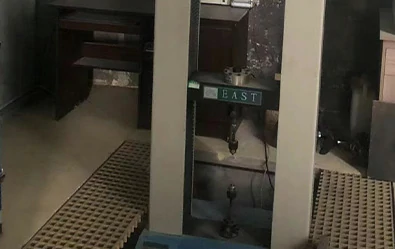loading...
- No. 9, Xingyuan South Street, Dongwaihuan Road, Zaoqiang County, Hengshui, Hebei, China
- admin@zjcomposites.com
- +86 15097380338
- Welcome to visit our website!
floor grating
Understanding Floor Grating An Essential Component in Modern Architecture
Floor grating is a fundamental architectural feature that serves both functional and aesthetic purposes in various settings, from industrial facilities to urban landscapes. This versatile material consists of a framework of intersecting bars, allowing for the passage of light, air, and liquids while providing a durable surface for foot traffic. In this article, we will explore the various applications, benefits, and design considerations associated with floor grating.
Applications of Floor Grating
Floor grating is widely used in several key sectors, including construction, industrial facilities, and commercial spaces. In industrial environments, grating is often employed in walkways, platforms, and stair treads. Its slip-resistant surface minimizes the risk of accidents, particularly in areas where liquids or chemicals may create hazards.
In commercial settings, such as shopping malls, restaurants, and office buildings, floor grating presents a modern aesthetic. It allows natural light to filter through to lower levels, creating a sense of openness and spaciousness. Architects and designers appreciate its versatility, as it can be made from various materials, including steel, aluminum, fiberglass, and plastic, allowing for numerous design possibilities.
Benefits of Floor Grating
1. Safety One of the primary advantages of floor grating is safety. The open design enables drainage, reducing the risks associated with standing water and minimizing slippery surfaces. Furthermore, the textured surface aids in preventing slips and falls, making it an ideal choice for areas prone to spills.
2. Durability Floor grating is designed to withstand heavy loads and harsh environments. Materials such as steel and fiberglass are corrosion-resistant and can endure exposure to chemicals and extreme temperatures, making them suitable for use in industries like manufacturing and food processing.
floor grating

3. Low Maintenance Unlike solid flooring options that require regular cleaning and upkeep, floor grating is relatively low maintenance. The open spaces allow debris and dirt to fall through, simplifying cleaning processes. Regular maintenance involves occasional inspections and cleaning with a simple wash to ensure optimal performance.
4. Aesthetic Appeal Beyond its practicality, floor grating offers a unique aesthetic. Available in various patterns and finishes, it can complement a building's design. The ability to incorporate color adds another dimension, making it not just functional but also visually pleasing.
Design Considerations
When selecting floor grating, several design considerations come into play. First, the load-bearing capacity must align with the intended use. For example, pedestrian areas require different specifications than those in heavy industrial environments.
Another critical aspect is the material choice. Steel is robust and suitable for heavy-duty applications, while fiberglass grating is lightweight and corrosion-resistant, making it ideal for environments exposed to chemicals. Additionally, the type of surface finish (e.g., painted, galvanized) can impact slip resistance and overall durability.
Moreover, floor grating should be installed with careful consideration of safety regulations and building codes. Proper installation not only ensures compliance but also optimizes the performance of the grating system.
Conclusion
In conclusion, floor grating is an essential element in modern architecture, combining safety, durability, and aesthetic appeal. Its applications span various sectors, making it a versatile choice for designers and builders. As environments continue to evolve, so too will the innovations surrounding floor grating, ensuring it remains a staple in creating safe and functional spaces. Whether in an industrial facility, a commercial building, or an urban park, floor grating plays a crucial role in shaping the environments we inhabit. Understanding its benefits and considerations is key to making informed choices in design and construction, ultimately enhancing the quality and safety of our built environments.
-
GRP Structures: The Future of Lightweight, High-Performance EngineeringNewsJun.20,2025
-
FRP Water Tank: High-Performance Storage for Corrosive and Clean Water SystemsNewsJun.20,2025
-
FRP Square Tube: The New Industry Standard for Chemical and Structural ApplicationsNewsJun.20,2025
-
FRP Pultruded Profiles: The Ultimate Choice for Lightweight Structural StrengthNewsJun.20,2025
-
FRP Handrails: The Safer, Smarter, and Stronger Choice for Modern InfrastructureNewsJun.20,2025
-
FRP Grating: The Smart Solution for Durable, Lightweight Industrial FlooringNewsJun.20,2025
-
Why Choose a Galvanized Water Tank for Your Storage NeedsNewsMay.21,2025
